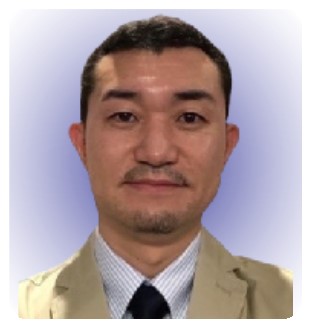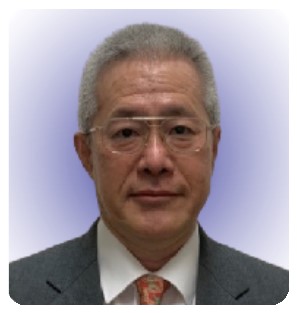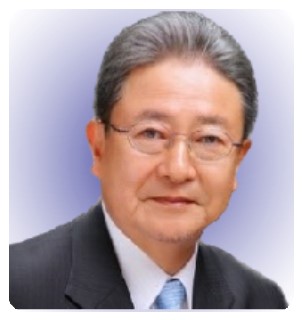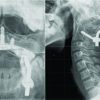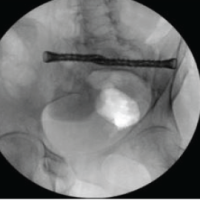The potential development of atlantoaxial instability in the anteroposterior direction should be considered when treating atlantoaxial rotatory fixation.
Dr. Takaaki Sugiyama, Department of Orthopaedic Surgery, Central Japan International Medical Center, Gifu, Japan. E-mail: soccer_univ@yahoo.co.jp
Introduction: We encountered a case of atlantoaxial subluxation (AAS) after treatment of atlantoaxial rotatory fixation (AARF). Reports of developing AAS after AARF are extremely rare.
Case Report: An 8-year-old male who feels neck pain was diagnosed with AARF type II according to the Fielding classification. Computed tomography (CT) showed that the atlas was rotated 32° to the right relative to the axis. Neck collar, Glisson traction, and reduction under anesthesia were performed. Five months after the onset of AARF, the patient was diagnosed with AAS due to dilatation of atlantodental interval (ADI) and underwent posterior cervical fusion.
Conclusion: AARF treatments, such as long-term Glisson traction and reduction under general anesthesia, which exert a stress on the cervical spine, may damage the alar ligaments, apical ligaments, lower longitudinal band, and Gruber’s ligament. Transverse ligament damage can also occur during the treatment of AARF, especially if AARF is refractory or requires long-term treatment. In addition, knowledge of the pathophysiology of atlantoaxial instability after AARF treatment is important.
Keywords: Atlantoaxial rotatory fixation, atlantoaxial subluxation, ligament injury.
Atlantoaxial rotatory fixation (AARF) is a relatively rare disease caused by minor cervical trauma, head-and-neck surgery, and inflammation, such as upper respiratory tract infections. AARF can be refractory if diagnosed late or if conservative treatment is inadequate. Treatments include a cervical collar, Glisson traction, and halo vest immobilization. Herein, we describe a patient who developed atlantoaxial subluxation (AAS) during refractory AARF treatment. There are few reports on the development of AAS during AARF treatment. In this case report, we focus on the causes of AARF and AAS.
An 8-year-old male with a history of autism spectrum disorder presented to our hospital with idiopathic right posterior neck pain and torticollis. The patient had no sign of infection around the neck or neurological disorders, such as numbness or muscle weakness. The ADI was 3.6 mm in the plain lateral radiograph of the cervical spine (Fig. 1). Plain computed tomography (CT) showed that the atlas was rotated 32° to the right relative to the axis (Fig. 2).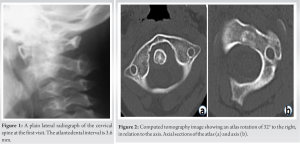 The patient was diagnosed with AARF type II according to the Fielding classification, and Glisson traction therapy was initiated. After 26 days of Glisson traction, magnetic resonance imaging (MRI) was performed, which revealed a C1–2 rotation of 19°. Reduction under general anesthesia was performed; however, the procedure was complicated by soft tissue tension associated with the chronic nature of the condition. After reduction, the rotation angle of C1–2 was 15° and was not sufficiently improved. Therefore, Glisson traction was continued for an additional 3 weeks.
The patient was diagnosed with AARF type II according to the Fielding classification, and Glisson traction therapy was initiated. After 26 days of Glisson traction, magnetic resonance imaging (MRI) was performed, which revealed a C1–2 rotation of 19°. Reduction under general anesthesia was performed; however, the procedure was complicated by soft tissue tension associated with the chronic nature of the condition. After reduction, the rotation angle of C1–2 was 15° and was not sufficiently improved. Therefore, Glisson traction was continued for an additional 3 weeks.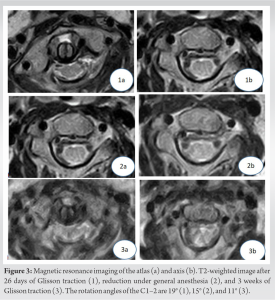 An MRI scan after 3 weeks of Glisson traction revealed an improved rotation angle for C1–2 of 11° (Fig. 3), preserved atlantoaxial distance, and no signs of cervical canal stenosis. By the end of the 3-week Glisson traction, 3 months had passed since AARF onset. The patient was discharged with a neck collar and rehabilitated at an outpatient clinic. Although there were no traumatic episodes, a plain lateral radiograph of the cervical spine taken 2 months after discharge showed that the ADI had increased to 8.9 mm. MRI revealed mild spinal cord compression at the C1 level, and the patient was diagnosed with ASS (Fig. 4).
An MRI scan after 3 weeks of Glisson traction revealed an improved rotation angle for C1–2 of 11° (Fig. 3), preserved atlantoaxial distance, and no signs of cervical canal stenosis. By the end of the 3-week Glisson traction, 3 months had passed since AARF onset. The patient was discharged with a neck collar and rehabilitated at an outpatient clinic. Although there were no traumatic episodes, a plain lateral radiograph of the cervical spine taken 2 months after discharge showed that the ADI had increased to 8.9 mm. MRI revealed mild spinal cord compression at the C1 level, and the patient was diagnosed with ASS (Fig. 4).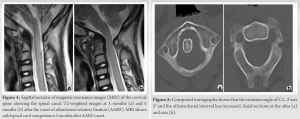 Since the rotation angle of C1–2 improved to 5° on CT, the AARF appeared to be improving; unfortunately, atlantoaxial instability was present (Fig. 5). Considering the risk of fatal complications due to progressive dislocation, posterior cervical fusion was performed. After wearing the halo vest, the patient’s ADI was 4.3 mm. C1–2 fusion was performed using C1 lateral mass screw and C2 pars screw and connected to the rod in situ (Fig. 6). Post-operative CT revealed improved spinal canal stenosis (Fig. 7) and he was discharged 8 days post-operatively. In the 6 months since the operation, the patient has progressed well.
Since the rotation angle of C1–2 improved to 5° on CT, the AARF appeared to be improving; unfortunately, atlantoaxial instability was present (Fig. 5). Considering the risk of fatal complications due to progressive dislocation, posterior cervical fusion was performed. After wearing the halo vest, the patient’s ADI was 4.3 mm. C1–2 fusion was performed using C1 lateral mass screw and C2 pars screw and connected to the rod in situ (Fig. 6). Post-operative CT revealed improved spinal canal stenosis (Fig. 7) and he was discharged 8 days post-operatively. In the 6 months since the operation, the patient has progressed well.
AARF often occurs in childhood due to the laxity of various ligaments that form the upper cervical spine, such as the transverse ligament [1,2,3,4]. This disease differs from AAS as our patient developed idiopathic AARF and required long-term treatment. At the patient’s first visit to our hospital, approximately 6-month post-onset, atlantoaxial instability in the anteroposterior direction was observed; however, there were no cervical symptoms of AARF. Further, the rotation angle of C1–2 was 5°, improved from the 32° noted before the first CT. Given these observations, we did not believe that the patient progressed from Fielding classification type II to III. Rather, we considered that the patient’s symptoms suggest a rare onset of AAS after AARF treatment. To our knowledge, there is only one similar case report in the literature. Han et al. [5] reported a case of a 9-year-old girl with AARF of Fielding classification Type I, who developed AAS after Glisson traction, reduction under general anesthesia, and halo vest fixation. Our case was of a similar age and underwent a similar treatment. Therefore, we hypothesized that prolonged Glisson traction and reduction under general anesthesia for the treatment of AARF may overload soft tissues within the neck, potentially leading to AAS. Due to AAS being a condition of cervical instability, the ADI increased to 8.9 mm in this case. It has been reported that surgical fusion in children is indicated in the following cases: Neurologic involvement, persistent anterior displacement with an ADI >4 mm [6], deformity present for more than 3 months, or recurrence of deformity following 6 weeks of immobilization [7]. From the report of Ogihara et al. [8] that neurological symptoms and ADL value were improved by performing in situ posterior reconstruction surgery after improving subluxation with the use of a halo vest, we performed C1–2 fusion after the wearing of a halo vest. Echigoya et al. [9] reported the association between ligament rupture and atlantoaxial instability using ligament dissection experiments with fresh cadaveric cervical spine specimens. They found that rupture of the transverse ligament was essential for AAS development. Rupture of the alar ligaments, apical ligaments, lower longitudinal band, and Gruber’s ligament, which act as stabilizers, may cause further dislocation. Rupture of the transverse ligament is a common etiology of AARF and AAS; hence, they suggested that AARF caused by ligament rupture may cause AAS. Our case was a Fielding classification type II based on the first CT findings. Fielding et al. [10] reported that deviation due to the anterior traction of the atlas caused a 3–5 mm rupture of the transverse ligament, suggesting transverse ligament damage. In addition to the transverse ligament damage, AARF treatments, such as long-term Glisson traction and reduction under general anesthesia, which exert a stress on the cervical spine, may damage the alar ligaments, apical ligaments, lower longitudinal band, and Gruber’s ligament, potentially leading to AAS.
Ligament injury is possible during AARF treatment, especially in refractory AARF cases. Although rare, knowledge of the pathophysiology of post-AARF AAS is essential.
AARF is a disease that should be treated immediately. For long-term treatments that exert stress on the cervical spine, ADI should be carefully measured, as well as C1-2 rotation, for the early diagnosis of AAS.
References
- 1.Fielding JW, Hawkins RJ. Atlanto-axial rotatory fixation. (Fixed rotatory subluxation of the atlanto-axial joint). J Bone Joint Surg 1977;59:37-44. [Google Scholar]
- 2.Martinez-Lage JF, Perez MM, Cornejo VF, Poza M. Atlanto-axial rotatory subluxation in children: Early management. Acta Neurochir (Wien) 2001;143:1223-8. [Google Scholar]
- 3.Subach BR, McLaughlin MR, Albright AL, Pollack IF. Current management of pediatric atlantoaxial rotatory subluxation. Spine 1998;23:2174-9. [Google Scholar]
- 4.Tauchi R, Imagama S, Ito Z, Ando K, Muramoto A, Matsui H, et al. Atlantoaxial rotatory fixation in a child after bilateral otoplastic surgery. Eur J Orthop Surg Traumatol 2014;24:S289-92. [Google Scholar]
- 5.Han C. Atlantoaxial rotatory fixation followed by atlantoaxial subluxation in a child with down’s syndrome: A case successfully treated with atlanto-axial fixation. The central Japan. J Orthop SurgTraumatol 2015;58:97-8. [Google Scholar]
- 6.Flynn JM, Wiesel SW. Operative Techniques in Pediatric Orthopedics. Philadelphia, PA: Lippincott Williams and Wilkins; 2010. [Google Scholar]
- 7.Yang SY, Boniello AJ, Poorman CE, Chang AL, Wang S, Passias PG. A review of the diagnosis and treatment of atlantoaxial dislocations. Global Spine J 2014;4:197-210. [Google Scholar]
- 8.Ogihara N, Takahashi J, Hirabayashi H, Hashidate H, Mukaiyama K, Kato H. Stable reconstruction using halo vest for unstable upper cervical spine and occipitocervical instability. Eur Spine J 2012;21:295-303. [Google Scholar]
- 9.Echigoya N. Traumatic atlato-axial subluxation with ruptured ligaments: An experimental study on fresh cadaveric specimens. In: Basic Biomechanics of the Skeletal System. Philadelphia, PA: Lippincott Williams and Wilkins; 1991. [Google Scholar]
- 10.Fielding JW, Cochran, GB., Hohl, M. Tears of the transverse ligament of the atlas. A clinical and biomechanical study. J Bone Joint Surg 1974;56:1683-91. [Google Scholar]




